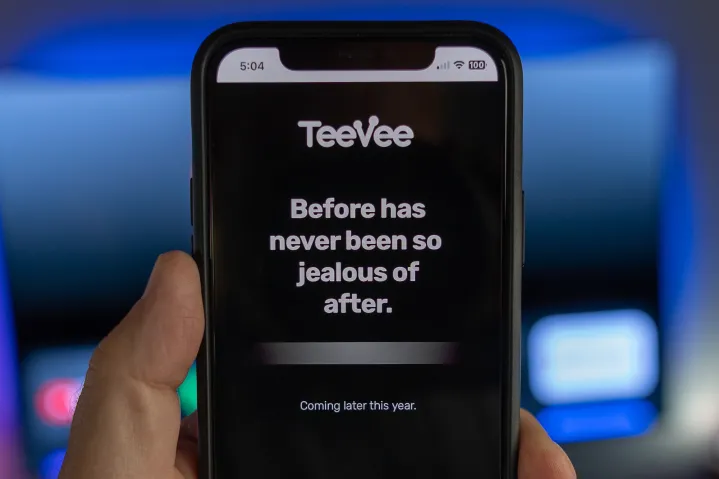How much money would it take for you to let a company put an electronic billboard in your living room? $500? $1,000? $3,000? What if it wasn’t cash, but instead a television?
That essentially is what’s on the table if a startup called TeeVee — from Pluto TV co-founder Ilya Pozin — has its way. Longtime streaming journalist Janko Roettgers, citing “multiple sources familiar” in his Lowpass newsletter, details a plan from the TeeVee Corporation, which he says is working on a television that has “a persistent second screen for advertising as well as informational widgets.” It also would have built-in speakers (Roettgers describes it as a soundbar), with the second screen being around the size of a phone.
The TeeVee TV would be given away for free, with the company making money from the ads on the screen.

Roettgers says there “likely will include some form of [automated content recognition] to identify what is playing on the first screen, which will allow the company to display context-relevant advertising.” But another extremely interesting point is that the launch model apparently would just be a dumb TV — sans any sort of built-in apps — and rely on that automated content recognition to figure out what ads to show. So it’d be piggybacking (and selling ads against) content it’s not actually serving up. You have to imagine that rightsholders might have something to say about that.
Ads on a TV aren’t anything new, of course. You likely see them every day, between shows, or even on pause screens. But the unanswered question here is whether any display ads on the secondary screen would be visible when you’re not actually watching anything. If they are, you’re essentially selling some very expensive real estate — a place in your home — to an electronic billboard. That better be one hell of a television.
But it’s almost certainly not one hell of a television. TeeVee would have every incentive to keep things cheap — and the TV industry isn’t exactly known for having large margins in the first place. You could easily envision a world in which someone would accept, say, a $500 television with this advertising scheme and then fire up an ad blocker, which you definitely should be using with a smart TV. Or just not connect the thing to the internet in the first place. Presumably you’d have had to sign some sort of agreement to accept a cheap TV in exchange for seeing ads. What happens if you break it? Will a large man come and collect a pound of flesh should you go rogue?
There are a ton of questions here — never mind the biggest: Would anyone actually want this in the first place?
Editors' Recommendations
- What we want to see from the next Apple TV 4K
- You Asked: home theater setup challenges, in-home TV calibration, and is Sony abandoning OLED
- Kanto’s new Ren active speakers with HDMI take aim at your TV room
- How to make the Super Bowl look amazing on your TV
- Why Apple Vision Pro will never replace your TV



